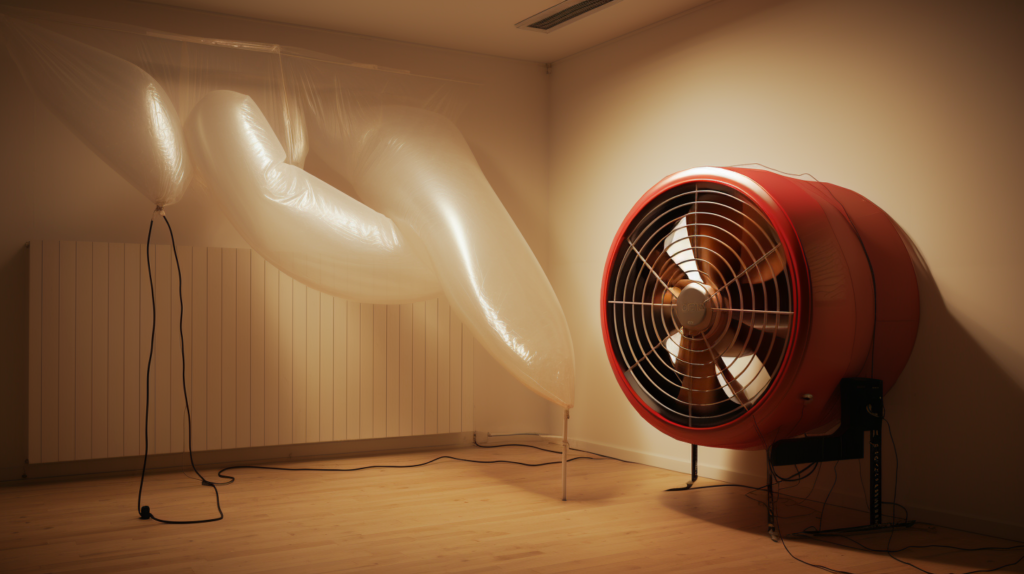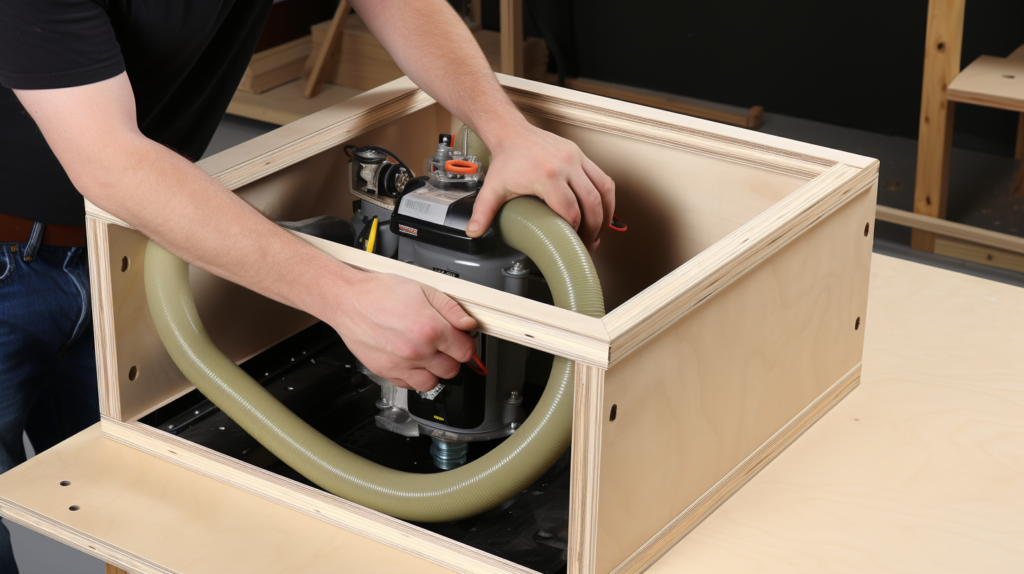Hook: Is your air pump’s loud noise disrupting your peace and quiet?
Soundproofing your air pump can make a world of difference by reducing noise pollution and allowing it to run disturbance-free.
In this post, we’ll cover everything you need to know to effectively soundproof your air pump. Let’s dive in…
Why Soundproof Your Air Pump?

Air pumps can generate a considerable amount of noise pollution due to the mechanics of pumping air and moving parts inside the pump itself.
This noise can be irritating, disruptive and even potentially harmful if you or others are exposed to it constantly.
Soundproofing your air pump is an effective way to reduce the noise it creates, allowing it to run quietly and minimise disturbances to yourself, your family and your neighbours.
There are several key reasons why you may want to consider soundproofing your air pump:
Reduces Noise Pollution – By soundproofing the pump, you can significantly dampen the noise emitted by the motor and moving parts.
This creates a quieter environment and reduces noise pollution that can negatively impact health and quality of life. Unwanted noise can cause stress, sleep disturbance and other issues.
Allows Pump to Run Without Disturbance – A common reason to soundproof an air pump is so that it can operate without creating noise that disturbs you, other household members or neighbours, especially during nighttime hours when people are trying to rest and sleep.
Soundproofing allows the pump to run as needed without disrupting activities.
Important for Home/Apartment Use – Air pumps used in home or apartment settings need to be quieter than industrial models. The tight quarters magnify noise.
Soundproofing allows residential air pumps to operate without noise complaints from occupants or neighbours.
Makes Pump Suitable for More Environments – Soundproofing may be necessary to dampen pump noise to appropriate levels for settings like offices, schools, hospitals or other quiet environments.
Patients, workers and students require quiet settings without disruptive background noise.
Overall, soundproofing enables an air pump to operate quietly and minimises its noise impact on you and those around you.
This makes the pump suitable for more residential and commercial settings that demand minimal noise levels for comfort and productivity.
Materials Needed

There are a variety of materials that can be used to soundproof an air pump effectively. The most common materials needed include:
Acoustic Foam Panels or Insulation – Acoustic foam panels or fiberglass insulation absorb and dampen noise and vibrations rather than reflecting them.
Lining the interior of a soundproof enclosure with these materials minimises sound reverberation within the enclosure.
Plywood or MDF Board – Plywood and Medium Density Fiberboard (MDF) can be used to construct a sturdy soundproof enclosure or box for the pump due to their density. Half-inch thickness or more works best to block noise. Avoid thin, flimsy wood.
Noise Dampening Mat or Pad – Noise dampening mats/pads are constructed from dense, heavyweight acoustic materials structured to isolate vibrations. Placing them under the pump blocks transfer of vibration noise into surfaces.
Vibration Isolating Mounts – Isolator mounts, usually made from rubber or neoprene, prevent pump vibrations from transferring into nearby surfaces that can amplify radiated noise. Effective for damping vibration propagation.
Soundproof Enclosure/Box – A rigid box or enclosure made from sound-dampening materials containing the pump is very effective for soundproofing. The box contains noise.
Sealant/Caulk – Sealant and caulking applied to any gaps, cracks or openings minimises potential sound leaks from an enclosure. Acoustic sealant works best.
Fasteners – Screws, bolts and other fasteners are required to securely construct and completely seal a soundproof enclosure without leaks.
Having these materials on hand will provide all you need to effectively soundproof most air pump models and configurations for quiet operation.
Steps to Soundproof Your Air Pump

Soundproofing an air pump requires methodically applying noise dampening and isolation techniques using the right materials. Follow these key steps to significantly reduce noise:
1. Build a Soundproof Enclosure
The first step is to construct an enclosure or box around the pump made from sound-absorbing, rigid materials. Plywood or MDF board that is at least half-inch thick works well to block noise.
Measure the dimensions of your pump and build panels allow a few inches of clearance to create an enclosure slightly larger than the pump itself.
Line the interior of the enclosure with acoustic foam panels or fiberglass insulation, leaving no surface uncovered.
The foam lining will absorb and dampen reverberations inside the box rather than reflecting noise.
Leave one side panel unattached or create a removable access panel to allow maintenance access to the pump.
2. Install Vibration Isolators
Installing vibration isolator mounts under the pump is important to prevent vibrations from transferring into surrounding surfaces, which can amplify noise.
Secure rubber or neoprene isolator mounts onto the base of the enclosure using bolts and place the pump directly onto the mounts.
The isolators will dampen vibrations and prevent reverberation noise through the floor.
3. Seal Enclosure
Once the pump is installed inside the soundproof enclosure, apply acoustic sealant or caulk around the edges and seams to minimise potential sound leaks from any gaps or openings.
Pay close attention to fully sealing the access panel, intake/exhaust openings, and any cracks or gaps in the box using waterproof caulking. This will keep noise contained within the enclosure.
4. Add a Noise Dampening Mat
For additional noise reduction, place heavyweight noise dampening mats made from dense acoustic barrier materials directly underneath the pump within the enclosure.
The dampening mat provides an extra layer of vibration isolation and dampens any pump vibrations to reduce reverberant noise. Combining mats with isolator mounts gives maximal vibration dampening.
5. Cover Air Inlet/Outlet
The air inlet and outlet to/from the pump are another potential source of noise leakage. Cut sections of acoustic foam that completely cover and seal the inlet and outlet openings.
Alternatively, construct soundproof ducting or channels using MDF lined with foam that cleanly contain the intake and exhaust piping to muffle noise.
Fully sealing the airways minimizes pump operation noise.
Conclusion
Soundproofing an air pump requires isolating, dampening and containing the noise using a combination of acoustic materials and isolation techniques.
Constructing a rigid, airtight soundproof enclosure lined with insulating foam panels around the pump is key.
Installing the pump on isolator mounts inside the enclosure prevents transfer of vibrations into surrounding surfaces.
Finally, fully sealing the air intake and exhaust openings contains noise leakage from pipework.
Following this comprehensive soundproofing approach with the right materials will allow an air pump to operate almost silently.
Completely containing, isolating and dampening the noise enables air pumps to be used in homes, offices and other settings sensitive to noise pollution without disturbance.
Running pumps without irritating noise benefits yourself and those around you.
